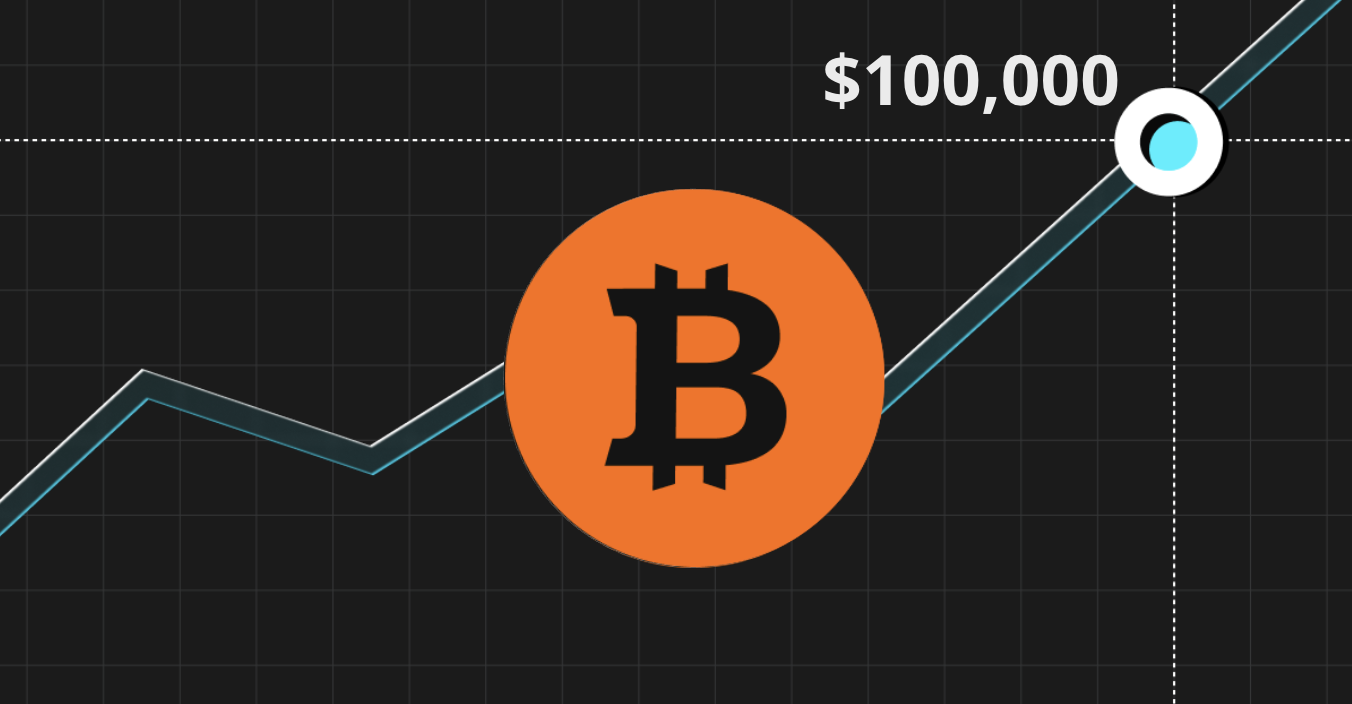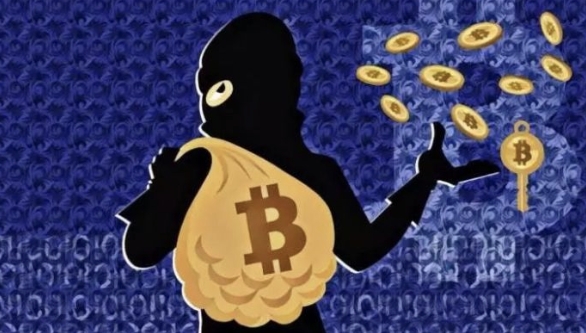
BTC Breaks 100,000 USD, A New Beginning | TrendX Research Institute
Around 10:30 AM on December 5, 2024, BTC broke through the $100,000 mark, officially entering the six-digit range, and its market value also surpassed $2 trillion. It has been 15 years since BTC was born.
In 15 years, BTC has grown from 0 to a market value of $2 trillion, comparable to Google, far exceeding silver. BTC, along with the entire cryptocurrency market, has grown from a baby at birth to a gradually mature, vibrant, and infinitely possible teenager, and is ready to embrace the next fifteen years with a new mindset and state.
From 0.0008 USD to 100,000 USD, BTC has increased by over 1.25 billion times in the past fifteen years. Perhaps we can also look forward to what achievements BTC will make in the next fifteen years.
At the same time, with the appointment of Paul Atkins as the new SEC chairman by Trump, preparing to sweep away the stagnation during Gary Gensler's tenure, this will also bring new play and new ideas to the industry. The future of BTC and cryptocurrency is promising.
The Past 15 Years of BTC
Let's look back 15 years. In November 2008, a paper titled "Bitcoin: A Peer-to-Peer Electronic Cash System" authored by Satoshi Nakamoto was published on the internet. This paper systematically explained how to build an electronic transaction system without relying on a trusted third party through a peer-to-peer network, bringing a disruptive idea to the global financial sector.
At that time, the world was experiencing an unprecedented financial crisis. This crisis, which began in the United States and was symbolized by the collapse of Lehman Brothers, triggered a chain reaction that not only shook the US financial system but also affected the global economy. In order to save the collapsing economy, the US government implemented unprecedented intervention policies, including injecting huge amounts of public funds into financial institutions and implementing quantitative easing policies. Although these measures stabilized the market in the short term, they also laid hidden dangers: currency overissuance, increased inflation risk, intensified financial market volatility, and even led to public distrust of the traditional financial system.
It was in this context that Satoshi Nakamoto conceived the idea of designing a new monetary system. He hoped to use technology to build a decentralized payment system that no longer relied on governments and financial institutions. In the traditional financial system, the issuance of currency is monopolized by central banks, and transactions are recorded and processed by financial institutions such as commercial banks. Although this model has been in operation for many years, it inevitably exposed problems brought about by centralization, such as excessive reliance on monetary policy, corruption in financial institutions, and the lack of transaction privacy.
The core idea of Bitcoin is to break this traditional model. Satoshi Nakamoto proposed the concept of blockchain technology, which is a distributed ledger technology that verifies and records transactions through a consensus mechanism of the entire network. With the help of blockchain, Bitcoin achieved decentralized transactions, allowing users to complete payments directly through a peer-to-peer network without relying on any intermediary institutions. This not only improved transaction efficiency and reduced costs but also provided higher guarantees for transaction privacy.
Just two months after the paper was published, on January 3, 2009, Satoshi Nakamoto mined the genesis block of Bitcoin on a small server in Helsinki, Finland. As a reward, he received the first 50 bitcoins. The timestamp of the genesis block also included a symbolic text: "The Times 03/Jan/2009 Chancellor on brink of second bailout for banks." This text not only recorded the historical background of Bitcoin's birth but also demonstrated its symbolic significance as a reflection of the traditional financial system.
From the moment of the birth of the genesis block, Bitcoin took its first historic step. Although initially only a few technology geeks and cryptography enthusiasts participated, the potential of this emerging thing gradually became recognized by more people. Bitcoin is not only a digital currency but also a technological revolution. It is based on decentralization and transparency, opening up new possibilities for payment methods, value storage, and financial innovation.
As time passed, Bitcoin and its underlying blockchain technology continued to develop, attracting the attention of countless developers, investors, and businesses. Today, Bitcoin has become a global asset, playing an important role not only in the financial sector but also sparking profound discussions on technological ethics and the economic system. It has also increased from 0.0008 USD to 100,000 USD.
How BTC Broke Through
In the early hours of January 11, 2024, the US Securities and Exchange Commission (SEC) approved 11 spot Bitcoin ETFs, including Belayed IBIT. This move caused a huge stir in the global financial market. As of November 21, 2024, in just 10 months, the Bitcoin ETFs had attracted over $100 billion in funds, which is close to 82% of the size of the US gold ETF. This change means that Bitcoin is no longer just a high-risk speculative product dominated by scattered retail investors but has gradually become an important asset for global institutional investors.
With the injection of these funds, the market structure of Bitcoin underwent a fundamental change. Wall Street financial giants, global listed companies, and sovereign wealth funds of multiple countries are all participating in the battle to acquire Bitcoin. The rise of institutional investment has made Bitcoin not only a "private domain" of cryptocurrency enthusiasts but also an asset category that cannot be ignored in the traditional financial system.
Take MicroStrategy (MSTR) as an example. This company, which was once primarily focused on enterprise software, has successfully transformed into the world's largest holder of Bitcoin. As of December 5, 2024, MicroStrategy holds over 402,100 bitcoins, accounting for 1.5% of the total Bitcoin supply. MicroStrategy has spent a total of $23.483 billion to purchase Bitcoin, with an average purchase price of $58,402. Now, MicroStrategy's unrealized gains have exceeded $16.7 billion, making it one of the most influential Bitcoin "whales" globally. At the same time, over 60 listed companies and thousands of private companies are quietly following in the footsteps of MicroStrategy, joining the ranks of Bitcoin hoarders.
Behind this trend, the shift in US policy has played a crucial role. After taking office, Trump quickly cleared a series of institutional obstacles to the development of cryptocurrencies and adopted a more relaxed cryptocurrency regulatory policy, supporting the inclusion of Bitcoin as a strategic asset in the government's reserves. This loosening of policy injected strong confidence into the market, driving more capital into the Bitcoin market and laying a solid foundation for the financialization and legalization of Bitcoin.
The globalization of Bitcoin is actually a complex script woven from multiple factors. First, against the backdrop of the US implementing a rate-cutting cycle, the liquidity of the global capital market has greatly increased, making the attractiveness of Bitcoin as a non-traditional asset increasingly prominent. The entry of Wall Street giants such as Belayed and Vanguard injected a large amount of institutional funds into the Bitcoin market and provided it with higher market acceptance. At the same time, MicroStrategy CEO Michael Saylor has become a fervent supporter of Bitcoin. By leveraging debt to increase his Bitcoin holdings, he not only drove up the price of Bitcoin but also boosted the company's stock price, creating a "stock price - coin price" spiral effect and inspiring more listed companies to follow suit.
More importantly, the shift in US cryptocurrency policy provided institutional guarantees for this process. Trump not only publicly expressed support for Bitcoin but also proposed including Bitcoin as a strategic reserve asset for the United States. This historic decision further accelerated the "normalization" process of Bitcoin, transforming it from an emerging speculative tool into a part of the global financial system.
This process of financializing Bitcoin can be seen as a carefully planned "top-level conspiracy." When Bitcoin ETFs were approved in the US market, Wall Street giants entered the market one after another, and companies like MicroStrategy devoured Bitcoin like whales, the entire market underwent profound changes. Cryptocurrencies are no longer just an investment for a small circle; they are gradually becoming an important part of the global capital market, heralding profound changes in the future of the financial sector.
Through this series of policy adjustments, market changes, and corporate behavior, the status of Bitcoin has undergone a revolutionary change, and in the future, it is likely to become not just an alternative choice in asset categories but one of the core assets in the global economic system.
The Impact of Paul Atkins' Election
In addition to the aforementioned reasons, another important factor that led to BTC breaking through $100,000 was the confirmation of the new SEC chairman.
In the early hours of December 5, 2024, Trump announced on his social platform Truth Social that Paul Atkins would become the new chairman of the US Securities and Exchange Commission (SEC). This decision marks a major shift in US financial regulatory policy and may have far-reaching implications for the future of the capital market. Paul Atkins, 66, is a financial regulatory expert with a deep background who has long been committed to promoting business freedom and reducing government intervention.
Atkins' political stance and regulatory philosophy align with many conservative financial experts. He advocates for more market-oriented policies and advocates for reducing the regulatory burden on businesses. After the global financial crisis of 2008, he publicly opposed the Dodd-Frank Act, which strengthened the regulation of financial institutions and imposed heavy fines on companies suspected of violating securities laws. He believed that excessive financial regulation stifled innovation and business vitality, especially in the fields of digital currency and financial technology, making him one of the representatives of market liberalism.
Atkins' political influence became apparent shortly after Trump was elected president in 2016. At that time, he played an important role in Trump's transition team, pushing the Trump administration to adopt a more relaxed financial regulatory policy and advocating for the withdrawal of many regulations that affected the free operation of financial markets. This stance was implemented after the Trump administration took office, and Trump also explicitly expressed support for reducing the regulatory burden on financial institutions.
According to The New York Times, Atkins' appointment may indicate that the US Securities and Exchange Commission will adopt a more relaxed regulatory strategy, especially in the regulation of the digital transformation of financial markets and cryptocurrencies. Atkins has repeatedly stated that he supports solving financial regulatory issues through market-oriented means and emphasizes that the government should respect the freedom of choice of businesses and investors. His regulatory philosophy may provide greater space for technological innovation and the development of the capital market, especially in the field of cryptocurrencies and financial technology, as digital asset investment tools such as Bitcoin ETFs become more widespread.
In addition, under Atkins' leadership, the US Securities and Exchange Commission may pay more attention to innovative assets and technologies in the financial market, reduce excessive intervention in traditional financial markets, and promote the rapid development of emerging financial products. His appointment is also seen as a kind of "lifting of the ban" on the financial industry, especially in a series of financial innovations and digital asset fields that were originally subject to strict regulation. This shift will not only affect investor confidence but may also change the competitive landscape of the entire financial industry.
Conclusion
BTC has achieved a 1.25 billion-fold increase in 15 years and has brought a whole new industry to the world. This industry already has millions of practitioners, hundreds of millions of users, and hundreds of sub-sectors. More importantly, the encrypted industry, which has accumulated initial assets, is ushering in a new dawn. Combined with AI, real-world asset-related RWA, and the coupling of traditional and encrypted funds, coin-stock equal rights, and financial-related tracks will further develop. As encrypted technology is widely adopted in the real world, we can expect to see more encrypted applications in the future. BTC breaking through 100,000 is just the beginning, like a pure child stepping into a vibrant teenager, this is a new beginning.
Follow Us
TrendX is a profit strategy treasury driven by AI and DePIN, providing efficient one-click trading and investment solutions designed for layered net asset users. Since its establishment in 2022, TrendX has processed over 20TB of on-chain and off-chain data and analyzed tens of billions of data points in real-time to discover investment opportunities. Adhering to the concept of "change is opportunity," TrendX allows users to directly obtain the best investment insights and execute on-chain transactions with one click.
Website: https://app.trendx.tech/
Twitter: https://twitter.com/TrendX_tech
Investment carries risks, and the project is for reference only. Please bear the risks on your own.



